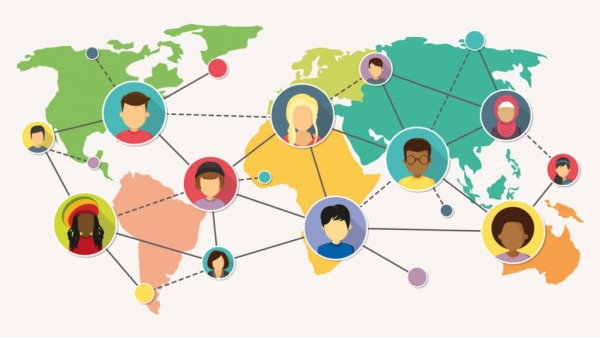Globally, gender-based violence and violence against women are increasing, demanding the attention of government administrations, human rights coalitions, and the general public. While different pieces of legislation have been implemented to target and prosecute these crimes, some nations remain increasingly unsafe for women. For instance, in 2022, Brazil was ranked 5th in the world for femicide rates, one of many factors contributing to Brazil’s reputation as a gender-based violence hotspot (Forster et al., 2022). Femicide rates constitute just one of the many facets of gender-based violence, alongside rates of rape, intimate partner violence (IPV), and domestic violence. Several factors evident in Brazil and across Latin America contribute to the frequency and severity of gender-based violence, including education, income level, gender norms and deeply rooted cultural conventions like machismo (Rodrigues, 2020). Admittedly, there have been attempts by the Brazilian government to enact specific laws to reduce gender-based violence, such as the Law Against Femicide of 2015. However, existing government programs, such as the anti-poverty initiative Bolsa Família (now Auxílio Brasil), already provide part of the solution to tackling gender-based violence in Brazil and may prove to be an example to extend to the rest of the world.
Established by President Lula de Silva’s administration in 2003, Bolsa Família is a conditional cash transfer program. Like many traditional conditional cash transfer programs, Bolsa Família provides financial aid to families and individuals who meet requirements for conditions like prenatal care, school enrollment, and vaccinations, among others (Tepperman, 2016). Bolsa Família derives its uniqueness from the fact that the cash transfers are preferentially awarded to female heads of household. Becoming a highly successful program, Bolsa Família has grown in size and popularity since its establishment and has withstood significant changes in Brazilian leadership and policies for nearly two decades.
Alongside Bolsa Família’s expansion, the Brazilian government has targeted gender-based violence through legislation; for example, the María da Penha Law of 2006, which imposed criminal sanctions upon perpetrators of domestic violence against women (Rodrigues, 2020). Similar laws have functioned to create a precedent for the consequences of such violence whilst Bolsa Família works towards lowering Brazil’s rates of gender-based violence (specifically, those of IPV) through the provision of social welfare.
Underscoring Bolsa Família’s success at lowering IPV rates is a consistent demographic trend of low income between both survivors and perpetrators (Vasconcelos et al., 2019). It is probable that the economic instability in these lower-income families is linked to higher rates of IPV due to its potential to cause familial stress, arguments, and disruptions, and a further consideration is that poverty-afflicted families are often part of the indigenous population, highlighting the intersectional nature of IPV occurring in Brazil.
In its own definition, Bolsa Família is an anti-poverty program primarily aiming to bring families out of these precarious economic situations through provisional assistance. This intends to lower the risk of IPV, wherein receiving a higher income may lead to less hardship in households, fewer partner and spousal arguments, and improved relationship dynamics (Abramsky et al., 2019). The program has reached approximately 85% of the poorest families in Brazil and, during its first three years, it cut extreme poverty by 15% while also reducing the nation’s overall income gap by nearly a third – a substantial achievement that has only been growing since its inception (Tepperman, 2016). In addition to significantly decreasing the Brazilian income gap, the program offers increased access to healthcare services, another important factor in lowering rates of IPV (Sugiyama & Hunter, 2020). Through incentivizing healthcare, increasing familial income, and improving household relationships, Bolsa Família has changed the face of Brazilian society far outside the context of poverty.
While the rate of IPV in Brazil has generally trended downward, its decline hasn’t been completely linear. IPV incidents have actually increased in recent years, most notably in 2020. As a result of the COVID-19 pandemic, conditions for IPV and domestic violence were heightened significantly, culminating in a 29% increase in restraining orders from February 2020 to March 2020 (de Souza Santos, 2022). Closer quarters led to an increased propensity for violence in many lower-income households, and as such, reports of IPV incidents have grown. Despite being a significant outlier in the Bolsa Família-IPV relationship, the COVID-19 pandemic has not been the only cause of spikes in reported cases. Alongside the sequestering of families, an additional factor increasing IPV rates has been improved access to reporting incidents through Violence Against Women (VAW) Networks (de Souza Santos, 2022). The introduction of the VAW Hotline and other reporting services, alongside prior legislation, has afforded women increased access to report incidents of IPV, most of whom could not report before. Although it precedes a spike in IPV incidents that threatens the downward trend, the VAW Network is an essential resource for women in abusive relationships. However, even these networks are under threat of being shut down as former Brazilian President Bolsonaro cut Brazil’s budget for fighting violence against women by 90% in September (Resende, 2022).
Above all, IPV is a significant public health problem, not just in Brazil but globally. In regions like Latin America, IPV stems from a culture of patriarchy, leading to femicide and other crimes of passion becoming increasingly prevalent in Brazil. Although the long-term impact of IPV is devastating, it is gradually waning over time with the aid of anti-poverty programs like Bolsa Família (Ally et al., 2016). With the potential for global success, Bolsa Família can lead the way for other countries to follow suit in lowering rates of IPV. Policies that target lower-income families to help them out of poverty, laws that increase access to healthcare, and governments that prioritize the health of their vulnerable populations can encourage the rest of the world to mirror Bolsa Família’s principle achievement — progress towards a safer society for low-income women.
Bibliography
Ally, E. Z., Laranjeira, R., Viana, M. C., Pinsky, I., Caetano, R., Mitsuhiro, S., & Madruga, C. S. (2016). Intimate partner violence trends in Brazil: Data from two waves of the Brazilian National Alcohol and Drugs Survey. Brazilian Journal of Psychiatry, 38(2), 98-105.
Abramsky, T., Lees, S., Stöckl, H., Harvey, S., Kapinga, I., Ranganathan, M., Mshana, G., & Kapiga, S. (2019). Women’s income and risk of intimate partner violence: Secondary findings from the MAISHA cluster randomized trial in north-western Tanzania. BMC Public Health, 19(1), 1-15.
de Souza Santos, D., Bittencourt, E. A., de Moraes Malinverni, A. C., Kisberi, J. B., de França Vilaça, S., & Iwamura, E. S. M. (2022). Domestic violence against women during the Covid-19 pandemic: A scoping review. Forensic Science International: Reports 5, 100276.
Forster, N., Blofield, M., Madera, N., Smith, A. E., Swift, J., Wylie, K. N., Thome, D., & dos Santos, P. A. G. (2022, October 6). How well is Brazil addressing violence against women? The Dialogue. https://www.thedialogue.org/analysis/how-well-is-brazil-addressing-violence-against-women/#:~:text=According%20to%20the%20World%20Health,every%2010%20minutes%20in%20Brazil
Resende, T., (2022, September 19) Bolsonaro Cuts Budget to Fight Violence against Women by 90% (Dias, C., Trans.). UOL. https://www1.folha.uol.com.br/internacional/en/brazil/2022/09/bolsonaro-cuts-budget-to-fight-violence-against-women-by-90.shtml
Rodrigues, T. (2020, March 9) Fighting for justice. Development and Cooperation. https://www.dandc.eu/en/article/domestic-violence-widespread-brazil-and-has-deep-cultural-roots
Sugiyama, N. B., & Hunter, W. (2020). Do Conditional Cash Transfers Empower Women? Insights from Brazil’s Bolsa Família. Latin American Politics and Society, 62(2), 53-74.
Tepperman, J. (2016) Brazil’s Anti-poverty Breakthrough The Surprising Success of Bolsa Familia. Foreign Affairs, 95(1), 34-47.
Vasconcelos, N. M. D., Andrade, F. M. D. D., Gomes, C. S., Pinto, I. V., & Malta, D. C. (2021). Prevalence and factors associated with intimate partner violence against adult women in Brazil: National Survey of Health, 2019. Revista Brasileira De Epidemiologia, 24 (suppl 2).
Cover image source: Brazilian Romani women who receive Bolsa Família by Sergio Amaral via Wikimedia Commons






